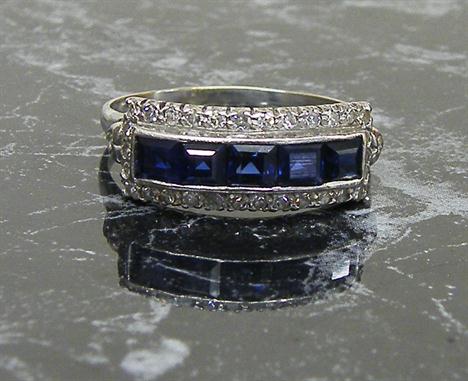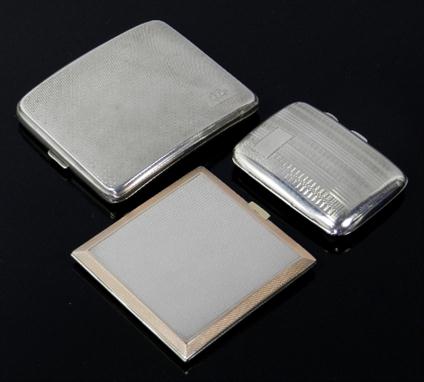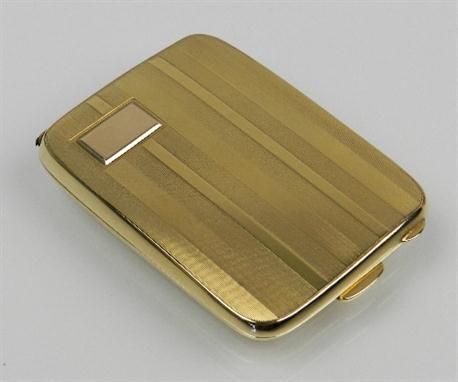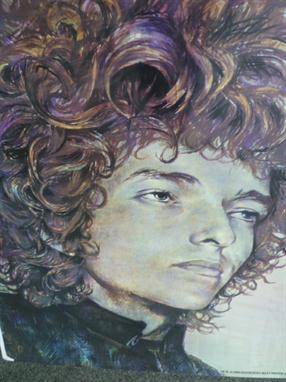We found 641361 price guide item(s) matching your search
There are 641361 lots that match your search criteria. Subscribe now to get instant access to the full price guide service.
Click here to subscribe- List
- Grid
-
641361 item(s)/page
A FINE AND RARE ENGLISH RAPIER WITH SILVER-ENCRUSTED HILT, CIRCA 1620 with straight tapering blade of flattened-hexagonal section, cut with a short fuller on each face, one with a running wolf and a cross mark, each retaining a small portion of latten inlay, rectangular ricasso stamped with a castle mark on each face, steel hilt of flattened rounded bars, comprising a pair of vertically-recurved quillons swelling towards the terminals and with delicate bud-shaped finials, écusson, outer ring-guard swelling in the centre, knuckle-guard en suite with the ring, thumb-loop and large globular pommel, the outer face of the bars encrusted with silver cherubic masks with feathered crowns, scrolling leafy tendrils, ball flowers and fruit all within beadwork frames, the pommel with a central matching mask on each side framed by bold leaves on a ground of scrolling tendrils, the inner face sewn with pellets and further tendrils (the silver rubbed and with minor losses), the thumb-loop plain, and wooden grip retaining an early binding of plaited silver wire and ribband and `Turks` heads` 95.8cm; 37 3/4in bladeProvenance Christie`s, King Street, 22nd July 1992, Lot 39The decoration of this hilt is almost certainly by the same hand as a sword sold in these rooms, 12th December 2007, lot 285. The use of cherub masks with feathered crowns is particularly unusual. Both are related to a rapier in the Wallace Collection, inv. no. A596. The Wallace rapier originated from William Meyrick and was described in the 1861 catalogue as `hilt and pommel....stated to have been recently dug up at Saffron Walden;....A suitable blade...has been added...`. The quality of both the decoration and the hilt itself would suggest that both originate from a Royal London workshop, such as that of Nathaniel Matthewe (recorded 1584-1641). Matthewe is mentioned in the Great Wardrobe accounts in the early 17th Century where it appears that he was required to supply swords for specific occasions such as for the enrolment of a Knight of the Bath and the installation of a Garter Knight. On 28th September 1614 he is recorded supplying `....a hunting weapon with a knife....set with cherubs` heads of silver, the whole damascened with gold embossed and chased, the grip of large silver wire gilded.....`. See A. V. B. Norman 1986, p. 138 and L. Southwick 2001, pp. 178-179. Three hilts of this group are currently on exhibition at the Wallace Collection, London: The Noble art of the Sword, Fashion and Fencing in Renaissance Europe, circa 1520-1630, cat. nos. 3.09, 3.10, 3.11.
BLAIR, C. European Armour, London 1958; ATTARD, Collecting Military Headgear, A Guide to 5000 of Helmet History, Atglen 2004; HAWTREY GYNGELL, D. S. Armourers Marks, London 1959; KARCHESKI, W. J. & RICHARDSON, T. The Medieval Armour from Rhodes, Leeds 2000; GODOY, J. A. & LEYDI, S. Parures Triomphales, le Maniérisme dans l`Art de l`Armure Italienne, Geneva 2003; CAMBIN, G. Le Rotelle Milanesi, Fribourg 1987 (6)
FFOULKES, C. J. The Armouries of the Tower of London, London 1916 (Volume 1); SZABLOWSKI, J. Collections of the Royal Castle of Wawel, Warsaw 1969; HILTL, G. Die Waffensammlung des Prinzen Carl von Preussen, Berlin 1981; WENNBERG, K. European Firearms in Swedish Castles, Uddevalla 1986; BOCCIA, L. G. Il Museo Stibbert a Firenze, Milan 1975, Volume 3, two copies; DE MORA AMELL, E. Museo-Armería de D. José Estruch y Cumella, Barcelona 1976; BOCCIA, L. G. Musei e Gallerie di Milano, Museo Poldi Pezzoli, Armeria II, Milan 1986, in its slipcase; MAZZINI, F. (editor), L`Armeria Reale di Torino, Milan 1982; MANN, J. Wallace Collection Catalogues European Arms and Armour, London 1962, Volumes 1 & 2; BIDERMANN, G. H. Burg Hornberg, Schwäbisch Hall, 1980; FLIEGEL, S. N. Arms and Armour, the Cleveland Museum of Art, New York 1998; REVERSEAU, J. P. Armes et Armures de la Couronne au Musée de l`Armée, Dijon 2004, in its slipcase; Edged Weapons and Firearms in the Collection of Eugene S. Jones; Musée des Armes Rares , Ancienes et Orientales de sa Majesté l`Empereur de toutes Les Russies, Fridingen 1981; KUNSTHISTORISCHES MUSEUM WIEN, Katalog der Leibrüstkammer, Vienna 1976 (17)
NEAL, W. K. & BACK, D.H.L., The Mantons: Gunmakers, London 1967; GEORGE, J.N. English Pistols & Revolvers, North Carolina 1938; GEORGE, J.N., English Guns & Rifles, Harrisburg 1947; BLACKMORE, H.L. Royal Sporting Guns at Windsor, London 1968; TAYLERSON, A. The Revolver 1889-1914, London 1970; AKEHURST, R. Sporting Guns, London 1972; DIXON, N., Georgian Pistols, The Art and Craft of the Flintlock Pistol, 1715-1840, London 1971; WHITELAW, C. Scottish Arms Makers, London 1977; CALDWELL, D. Scottish Weapons & Fortifications 1100-1800, Edinburgh 1981; METROPOLITAN MUSEUM OF ART. Early Firearms of Great Britain and Ireland, Connecticut 1971; BLACKMORE, H. British Military Firearms 1650-1850, London 1961; GLENDENNING, I. British Pistols and Guns 1640-1840, London 1951; ROGERS H. Weapons of the British Soldier, London 1960; ATKINSON, J. Duelling Pistols, London 1964; BLACKMORE, H. English Pistols, London 1985 (15)
STONE, George S. A Glossary of the Construction, Decoration and Use of Arms and Armour in all countries and in all times, together with some closely related subjects, New York 1961, in its slipcase; GARDNER, J. S. Armour in England from the Earliest Times to the Seventeenth Century, London 1898, gilt cloth covered boards; BLACKMORE, H.L. The Armouries of the Tower of London, I Ordnance, London 1976; DIXON, N. Georgian Pistols, the Art and Craft of the Flintlock Pistol, 1715-1840, London 1971; MAY, W. E. & ANNIS, P. G. W. Swords for Sea Service, London 1970 (Volume 1); BELOUS, Russell E. Arms and Armour, Los Angeles 1969, in its slipcase; HOWE, James V. The Modern Gunsmith, New York 1946 (2 Volumes); and two further volumes
WISE, A. The History and Art of Personal Combat, London 1971; MOORE, W. Weapons of the American Revolution and Accoutrements, New York 1967; DE RIAZ, Y. The Book of Knives, New York 1981; SERVEN, J. Conquering the Frontiers, Arizona 1974; DAVIS, W. Brothers in Arms, London 1995; PETERSON, H. American Knives, New York 1958; FORTÓN, R. Antique Clasp Knives, Spain 2003; DOMENECH, A. Exhibition Knives, Joseph Rodgers & Sons, the Samuel Setian Collection, Buenos Aires 1999; TWEEDALE, G. The Sheffield Knife Book, Sheffield 1996; WASHER, R. The Sheffield Bowie & Pocket-knife markers 1825-1925, Nottingham 1974; LEVINE, B. Knifemakers of Old San Francisco, Colorado 1998; PALMER B., MORAN J. & PHILLIPS, J. Bowie Knives of the Ben Palmer Collection, New Jersey 1992; EVANS, R. The Plug Bayonet, Shipley 2002; COMMAGER, H. Illustrated History of the American Civil War, London 1982 (16)
ZYGULSKI JUN, Z. Husaria Polska, Warsaw 2000; HELD, R. (Editor), Art, Arms and Armour, an International Anthology, Chiasso 1979, Volume 1; THOMAS, B., GAMBER, O. & SCHEDELMANN, H. Arms and Armour, London 1964; ORTIZ, A. D., CARRETERO, C. H. & GODOY, J. A. Resplendence of the Spanish Monarchy, New York 1991; HELD, R. A Review of 162 Antique Arms and Pertinent Objects, Lugano 1976; GIORETTI, G. A Guide to the Arms and Armour Collection in Cesta Castle San Marino, San Marino 1969; Weapons of the Collection of Peter the Great, Moscow 1995; SCHÖBEL, J. Princely Arms and Armour, London 1975; GUTOWSKI, J. Tartar Arms and Armour, Warsaw 1997; TAVARD, C. H. Le Livre des Armes and Armures de l`Antiquité au Grand Siècle, Milan 1977; DEMMIN, A. Die Kriegswaffen in Ihren Geschichtlichen Entwickelungen, 1964; WATKINS, J. (Editor), Studies in European Arms and Armour, Philadelphia 1992; KRENN, P. & KARCHESKI, W. J. Imperial Austria, Treasures of Art, Arms and Armour from the State of Styria, Munich 1992; HELD, R. (Editor), Arms and Armour Annual, Chicago 1973; WAGNER, E., DROBNA, Z. & DURDIK, J. Tracht, Wehr und Waffen, 1957 (15)
A SWEPT HILT RAPIER, CIRCA 1580, PROBABLY ITALIAN with tapering flat double-edged blade, engraved with a running hound and a pair of lines on each face (slightly shortened), rectangular ricasso stamped with a bladesmith`s mark on one side, steel hilt of faceted bars (loose, the tang slightly bent), comprising a pair of short quillons swelling towards the terminals, écusson, a pair of arms, inner and outer guard each formed of three ring-guards, the uppermost joining the base of the arm to the quillon and joined to the knuckle-guard by an additional bar, the lowest ring filled on the outside with a brass plate, faceted near-spherical pommel, with traces of early gold paint, and the grip bound with plaited wire and `Turks` heads` 94.5cm; 37 1/4in bladeA rapier with related hilt is currently on exhibition at the Wallace Collection (inv. no. A576), London: The Noble art of the Sword, Fashion and Fencing in Renaissance Europe, circa 1520-1630, cat. no. 2.15.
A RARE VENETIAN PARADE SHIELD MADE FOR THE BODYGUARD OF WOLF DIETRICH VON RAITENAU, PRINCE ARCHBISHOP OF SALZBURG, LATE 16TH CENTURY of convex near circular form, constructed of two-ply wood covered with leather decorated on its front face, within an outer border of foliate chevrons and engrailing and an inner border of running foliage and flowerheads, with a pattern of foliate interlace and flowerheads all tooled and lacquered gold over silver, the ground of the main field additionally covered with translucent red lacquer, and the detail picked out throughout with red and green lacquer, the rear retaining its yellow-painted decoration, and a series of nails for attaching an arm-pad, and enarmes (some losses, expertly restored and in stable condition throughout) 57cm; 22 1/2in wideThis shield is one of a series made in the time of Wolf Dietrich von Raitenau, who ruled as Prince Archbishop of Salzburg, 1587-1612. An inventory of 1669, now in the archives of the Städtisches Museum, Salzburg, mentions 398 gilded and painted shields. Some seventy of these shields are still to be found in the Carolina-Augusteum Museum, Salzburg. When Salzburg was occupied by the Bavarian troops in 1809 a number of these shields were transferred to the main Zeughaus at Munich, and sold from there after the First World War.Other examples of this distinctive group of shields are to be found in the Metropolitan Museum of Art, New York (Acc. No. 29.158.586) the Philadelphia Museum of Art, the Art Institute, of Chicago, the Wallace Collection, London, the Historisches Museum, Dresden (Inv. No. N1), and Schloss Vaduz, Liechtenstein (cat. no. 871 & 881). In recent years a small number have been offered for sale at auction, including one sold in these rooms 8th December 2010, lot 126; another from the collection of Karsten Klingbeil at Pierre Bergé & Hermann Historica, Brussels, 13th December 2011, lot 88 and another was in the collection of Lord Astor of Hever, sold Sotheby`s, London, 5 May 1983, Lot 29.The fashion for Turkish-style arms is recorded in Europe as early as the middle years of the 16th century. King Philip II had a `Turkish` bodyguard for his entry into Milan in 1548. The influence of Turkish taste is evident in both the style and technique of decoration of the Salzburg shields which has its origins in Turkish bookbindings of the period. During the 16th Century Venice had its own leatherworkers guild and many bookbindings as well as helmets, shields and quivers were made in this manner.For a contemporary discussion on the Venetian technique of varnishing and gilding see Leonardo Fioravanti, Compendio de` Secreti Nationali, Venice 1562 and Tommaso Garzoni, La Piazza universale di tutte le professioni del mondo, Nuovamente ristampata, posta in luce da Thomaso Garzoni da Bagnacauallo, con l`aggiunta d`alcune bellissime annotationi a discorso per discorso, Venice 1589. See E.J. Grube, 2007, pp. 231-251.Related shields of this type, but not part of the Salzburg contract, are preserved in the armoury of the Palazzo Ducale, Venice (See U. Franzoi 1990, pp. 82-3). Another, set with a late 15th Century besagew in the centre and perhaps related to a group in the Correr Museum, Venice, was sold Sotheby`s, Milan, 14th October 2009, lot 1217.
AN IMPORTANT 20 BORE FRENCH ROYAL FLINTLOCK LONG HOLSTER PISTOL MADE FOR CHARLES XI, KING OF SWEDEN (1655-97), BY PIRAUBE AUX GALLERIES DU LOUVRE A PARIS, DATED 1676 with blued barrel formed in four stages, the forward section signed `Piraube aux Galeries du Louvre a Paris 1676` in gold damascene on a long flat decorated with further damascened scrollwork, fitted with silver fore-sight, damascened with a classical trophy-of-arms at the muzzle, and a pair of monsterheads attacked by serpents hanging in scrolls of foliage ahead of the median, the latter formed with an engraved shaped panel flanked by a pair of damascened captives seated upon further trophies, the breech of octagonal then polygonal form, decorated in gold damascene with foliage, pellets and the full crowned Royal Swedish Arms (the bluing faded and with losses), the underside of the breech stamped with the barrelsmith`s mark, the letter `M` in a rondel, engraved tang decorated with monsterhead scrolls of foliage and border ornament, rounded lock chiselled with scrolls of foliage issuant from a classical vase and signed `Piraube` twice on the tail, engraved with border ornament, delicate scrolling tendrils inhabited by an archer and inscribed `aux Galleries a Paris` beneath the pan, the brim of the pan chiselled with a grotesque, fitted with chiselled cock decorated with leafy tendrils, a serpent head, a green man mask on the comb and retained by a further mask-shaped screw (the top-jaw and screw replaced), steel chiselled with a symmetrical arrangement of leafy tendrils issuant from a green man mask, figured walnut full stock (an early working replacement of circa 1730-40), impressed with the letter `K` next to the trigger-guard, carved with a raised moulding over the fore-end, a spray of foliage ahead of the trigger-guard and further scrolls and shell ornament about the tang, steel mounts comprising side-plate pierced and chiselled with a central moustachioed mask dividing an arrangement of scrolling monsterhead tendrils inhabited by a pair of differing herms, spurred pommel engraved with a pattern of rondels and foliage around the border, chiselled on each side with a symmetrical design of scrolling monsterhead tendrils issuant from a green man mask against a recessed gilt ground, the front and the back chiselled with further masks and engraved with monsterhead scrolls, fitted with a small finely chiselled grotesque mask cap supported by a pair of gold damascened Classical figures seated upon Classical trophies and surmounted by a Classical bust portrait, engraved trigger-plate, trigger-guard with an early inventory number `P No 1` chiselled with a further mask on the bow, the forward baluster issuant from a gaping mask and the finial chiselled with scrolling tendrils on a recessed gilt ground, a pair of moulded ramrod-pipes, the rear decorated with a gold damascened angel, pierced and engraved escutcheon damascened with the crowned Royal Swedish Arms, and steel-tipped ramrod, perhaps the original, and remaining in fine condition throughout (the damascene with small losses, areas of light wear) 53.3cm; 21inProvenance Charles XI, King of Sweden An American Private Collection Literature John F. Hayward, Bertrand Piraube, in Livrustkammaren 15, no.5 (1980), pp.129-132, figs 12-14.The pair to this pistol is preserved in the Metropolitan Museum of Art, New York (inv. no. 1990.114.2).These pistols are Bertrand Piraube`s earliest dated work. The late John Hayward identified three levels of quality by this maker of which the present pistol belongs to the highest. Piraube has been described as the most important figure in the decorative development of French firearms in the latter part of the 17th and early 18th centuries. On 25th January 1670 Louis XIV granted him a brevet de logement in the Galleries du Louvre. This appointment, which was confirmed in March the following year, established Piraube as primus inter pares amongst the gunmakers working for Louis XIV. In Germain Brice`s Description de la Ville de Paris, published in various editions between 1698 and 1718, he was described as a gunmaker who produced pieces of rare beauty. His period of tenure in the Galleries to Louvre (1670-1720) was the longest of any gunmaker. Working within the precincts of the Royal Palace freed Piraube from the restrictions of the Parisian Guilds and consequently he was able to employ as many apprentices and journeymen as his commissions required. It comes as no surprise that a significant number of the great European Ancestral Gunrooms have firearms by him. The present pistol and its pair illustrate a number of aspects of the designs of Louis XIV`s chief designer, Jean Bérain. For a further discussion of this maker and his work see John F. Hayward (op.cit.), and Thomas Del Mar Ltd, 9th December 2009, lot 266.Charles XI (1655-97) succeeded to the throne at the age of 4 in 1660. He excelled in the chase and was a fine horseman, as recorded in both his and other members of the Royal Family`s diaries. The present made to him by the French Ambassador at his coming of age in 1672 comprised twelve magnificently caparisoned Spanish thoroughbreds, complete with an equal number of pistols and guns, of which Piraube made one pair of pistols and one fowling piece. The present pistol, and its pair, must have been ordered within two years of this gift, allowing for the time lag in construction. A smaller pair of pistols, with silver barrels and mounts, decorated in almost an identical manner to the present pistol, are preserved in the Royal Armoury, Stockholm, (inv.no.4072, 4073). Given their size they were probably intended for a lady, and the materials used would suggest that they were made more for display than use.The letter `M` within a rondel beneath the breech is stamped on a number of French firearms of this period, including another pair of pistols and a gun by this maker, a pair of pistols by Masson, and a gun by Varnier all preserved in the Livrustkammeren, Stockholm (inv. nos. LRK 4334, 4335, 3626, 3627, 10036 respectively).See J. F. Hayward 1963, pp.32-47; the same author 1980, pp. 118-157; N. Drejholt1996, pp. 136-139 and S. J. Pyhrr 1991, p. 24.
A set of three Art Nouveau French silver servers, Henri Soufflot, Paris circa 1900, comprising; a fish slice, a fork and a spoon, each with typical Art Nouveau naturalistic floral decoration, total weight 9.5oz (3)WE DO NOT STATE CONDTION IN THE ABOVE DESCRIPTION – Before bidding please ensure you are satisfied with the condition of this lot – For details of condition please contact the auctioneer.
A pair of Art Deco silver ash trays, Robert Pringle & Sons, London 1936, each of square form with canted corners and engine turned decoration, one monogrammed to centre, 10cm wide, together with a further silver ash tray, Alexander Clark & Co Ltd, Birmingham 1946 and a silver mounted box with brass lining (at fault), total weighable silver 8.8oz (4)WE DO NOT STATE CONDTION IN THE ABOVE DESCRIPTION – Before bidding please ensure you are satisfied with the condition of this lot – For details of condition please contact the auctioneer.
An Art deco silver cigarette case, Joseph Gloster Ltd, Birmingham 1920, of rectangular form with engine turned decoration, 8.5cm wide, together with a further Art Deco silver cigarette case, Deakin & Francis, Birmingham 1931, with engine turned decoration and gilt interior, 8cm wide, total weight 6.5oz (2)WE DO NOT STATE CONDTION IN THE ABOVE DESCRIPTION – Before bidding please ensure you are satisfied with the condition of this lot – For details of condition please contact the auctioneer.
An Art Deco silver cigarette case, Cohen & Charles, London 1930, of square form with engine turned decoration and rose coloured border, the silver gilt interior engraved, 8.5cm wide, together with a further silver engine turned cigarette case, Birmingham 1928, 10.5cm wide and one other smaller example, 6cm wide, total weight of silver 10.5oz (3)WE DO NOT STATE CONDTION IN THE ABOVE DESCRIPTION – Before bidding please ensure you are satisfied with the condition of this lot – For details of condition please contact the auctioneer.
An Art Deco five part silver and guilloche enamel mounted dressing table set, Mappin & Webb Ltd, London 1939/40/42, each with geometric design to the blue guilloche enamel, comprising; a hand mirror, two hair brushes and two clothes brushes (at fault) (5)WE DO NOT STATE CONDTION IN THE ABOVE DESCRIPTION – Before bidding please ensure you are satisfied with the condition of this lot – For details of condition please contact the auctioneer.
An Art Deco five piece silver and guilloche enamel mounted dressing table set, H C Freeman Ltd, Birmingham 1928/29, each with radiating circular decoration to the blue guilloche enamel, comprising; a hand mirror, two hair brushes and two clothes brushes, all presented within associated case (5)WE DO NOT STATE CONDTION IN THE ABOVE DESCRIPTION – Before bidding please ensure you are satisfied with the condition of this lot – For details of condition please contact the auctioneer.
An Art Deco 9ct gold match book holder, Deakin & Francis, Birmingham 1927, of rectangular form with engine turned decoration, 6.5 x 4.5cm, weight 27gmsWE DO NOT STATE CONDTION IN THE ABOVE DESCRIPTION – Before bidding please ensure you are satisfied with the condition of this lot – For details of condition please contact the auctioneer.
A yellow metal Art Nouveau black opal matrix and blister pearl pendant in the style of Archibald Knox, designed as an oval black opal and oval blister pearl collet set in the pendant fob with a triangular shaped drop set with a pear shaped black opal matrix with two blister pearls collet set in entwined border, the reverse decorated with a dolphin, overall length 70mm, weight 11.6gms, no stampsWE DO NOT STATE CONDTION IN THE ABOVE DESCRIPTION – Before bidding please ensure you are satisfied with the condition of this lot – For details of condition please contact the auctioneer.
An Art Deco all diamond set brooch, designed as a central large collet set old cut diamond, with a surround of one hundred and fourteen old cut, eight cut and baguette diamonds, all in a white metal geometric setting, within box (one diamond missing), 45mm x 23mm weight 13.3gmsWE DO NOT STATE CONDTION IN THE ABOVE DESCRIPTION – Before bidding please ensure you are satisfied with the condition of this lot – For details of condition please contact the auctioneer.
-
641361 item(s)/page














































